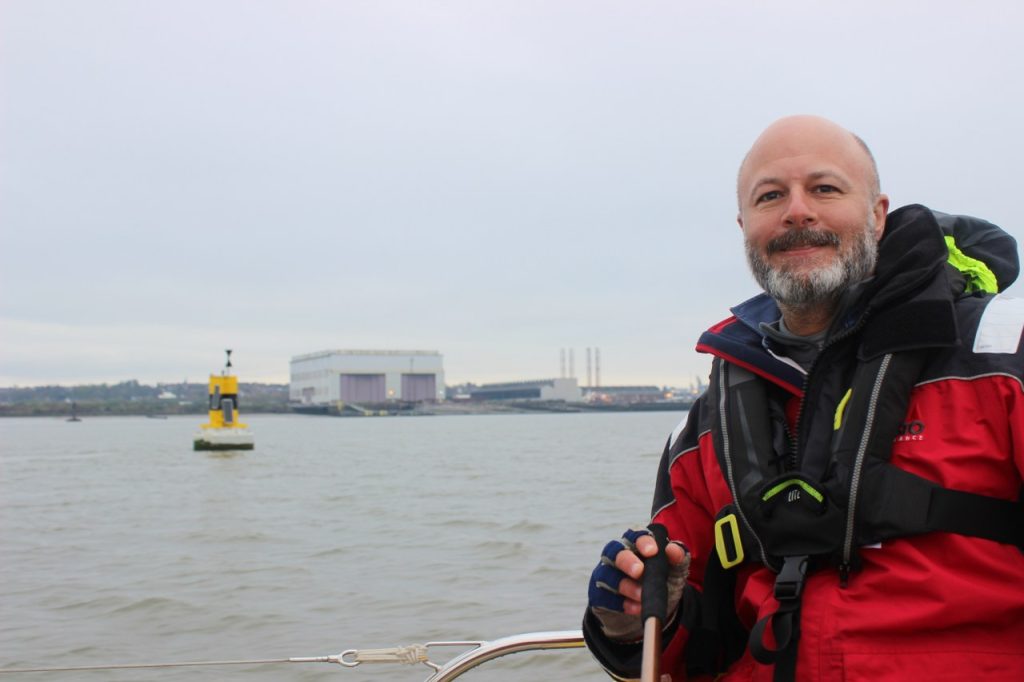On Saturday 15 April 2023, Lillebolero crewed by Gareth Boyes and me, completed the Liverpool Bay Three Rivers Challenge. The challenge is to start at ‘Pluckington’ buoy and then navigate to buoys in the Mersey, Dee and Ribble estuaries.
As we slipped from the marina, it was cold and there was not a breath of wind. We locked out at 06:15 and motored over to ‘Pluckington’ buoy, set the sails, and commenced the challenge at 06:28 with the sun rise. There was little true wind; fortunately, there was enough flood tide to give a sailable apparent wind and we set our course up the Middle Deep towards ‘G11’. By the time we got to ‘G9’ the tide and its apparent wind was disappearing. We managed to drift up to Garston before the ebb tide picked us up and took us past ‘G11’ at 08:51. One buoy down.
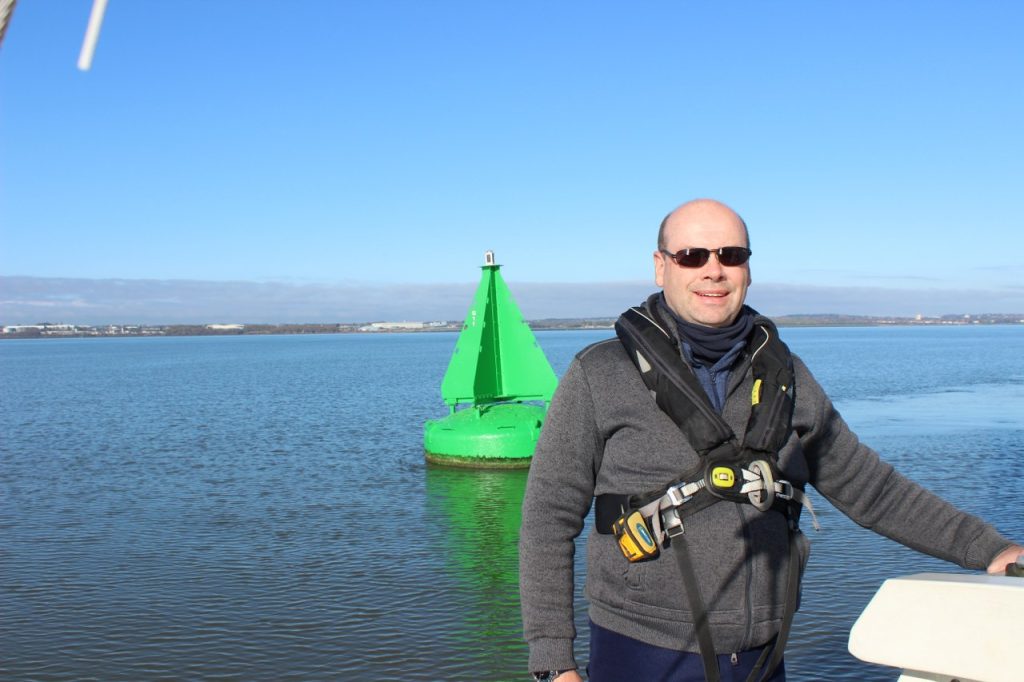
As the ebb tide increased so did the apparent wind. The sun then did its bit, warmed the land and the sea breeze started to fill in allowing us to tack along the Garston Channel. By the time we were at ‘G3’ it was a steady northerly force 2. We passed Pluckington again at 09:50. We reached ‘Brazil’ buoy at 10:48 and headed out through the Rock channel and set a course for Hilbre Island. I tried to take the short cut over Spencer’s Spit when the depth suddenly dropped to 2 m; the chart plus tide indicated it should have been 4.5 m. So, it was a crash tack and head out further to sea. Subsequent passages during the summer have shown there is navigable water from the top of the Rock Channel to HE2 buoy.
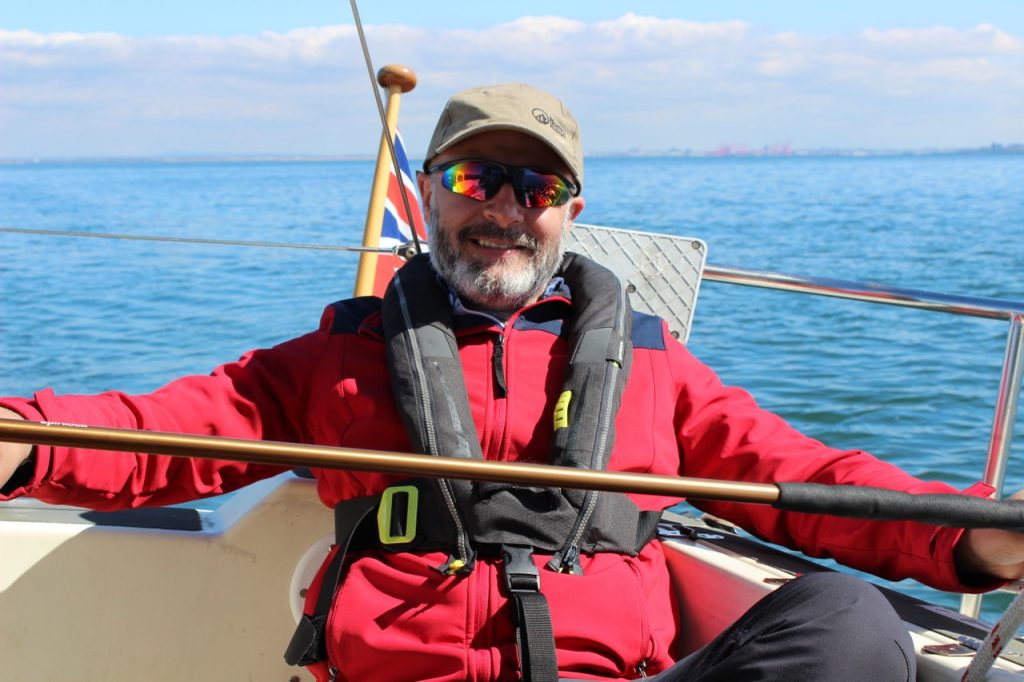
We made our approach into the Dee via the East Hoyle Bank channel at low tide. At 14:10, as we passed ‘HE3’ buoy the sand bank was high and dry several metres on the other side. It was then a slow (2 knots) dead run up the Dee passing Hilbre Island and West Kirby with the main and cruising chute goose winged, in lovely sunshine.
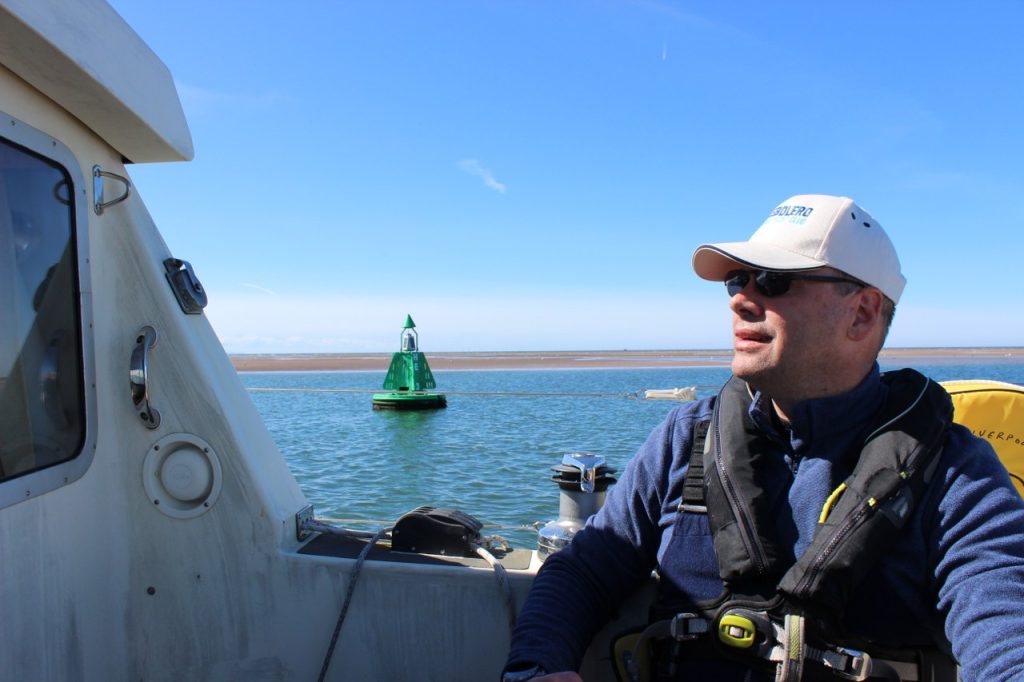
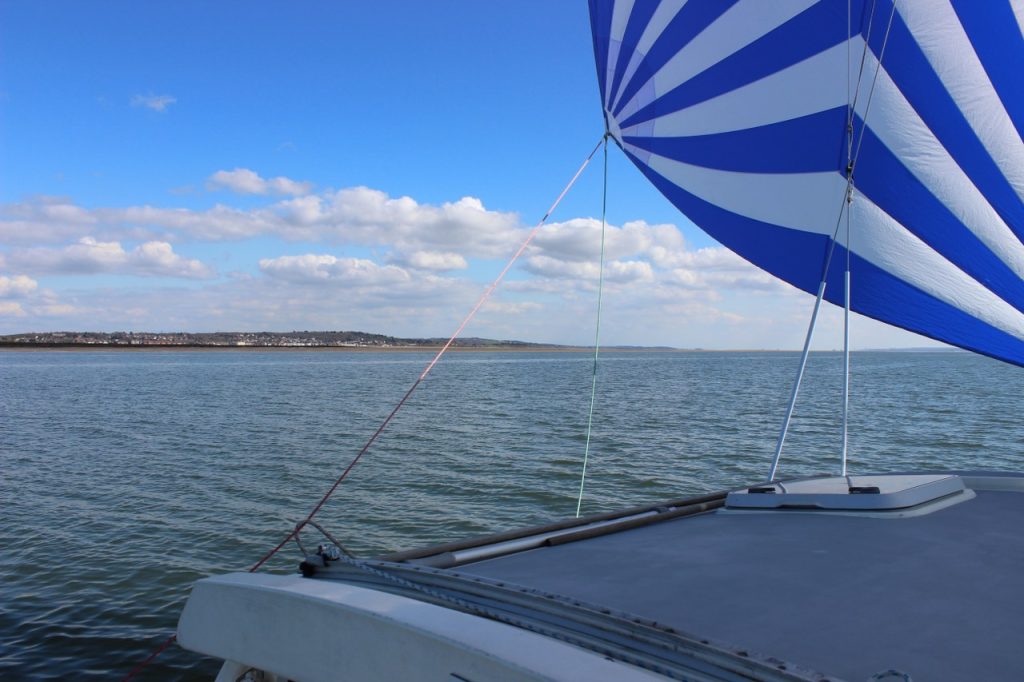
At 16:04, we reached the ‘Dee no.1’ buoy, it was spinnaker down, genoa out before we crossed the swatchway that joins the Hilbre Island channel to the main Dee Welsh Channel. I estimated the depth in the swatchway to be about one metre greater than the predicted tidal height at Hilbre Island. It was then a close-hauled starboard tack to ‘West Bar’ buoy which was passed at 16:30. Two buoys completed.
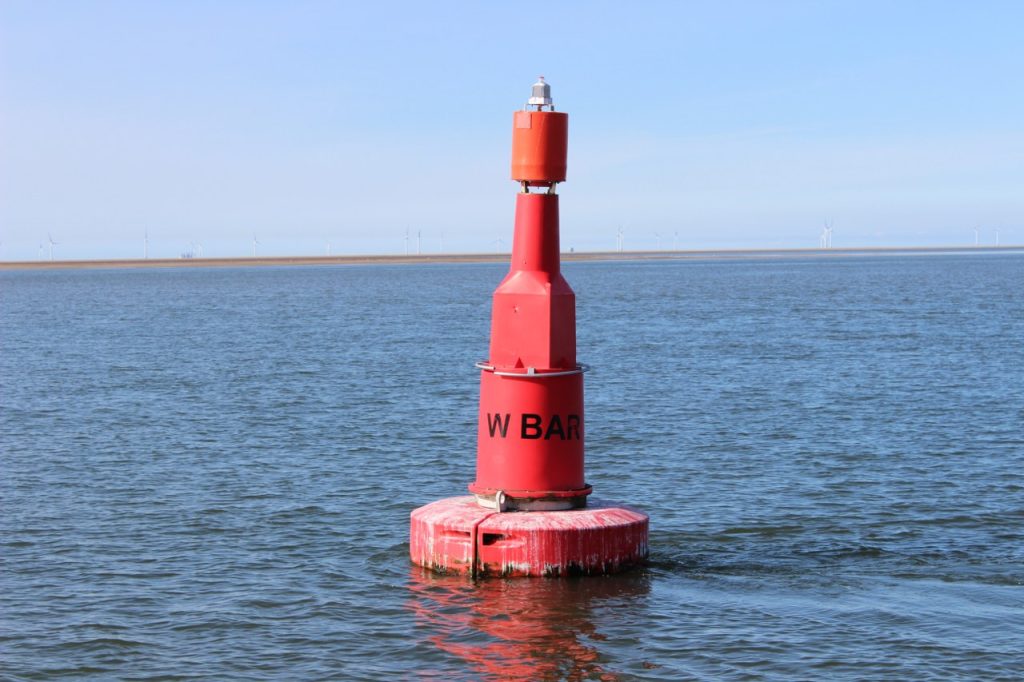
We kept close to the bank, following the four-metre contour avoiding the stronger adverse tide in Mostyn Deep. At the ‘Dee’ buoy we left the Welsh Channel and headed north through another swatchway. As we passed ‘Mid Hoyle’ buoy at 17:43, the wind was dying. We got to the north of Welshman’s Gut and anchored at 18:20; shortly afterwards we were becalmed. With no wind forecast, we had dinner and went to bed.
On Sunday, at 04:30 the wind filled in from the south-southeast. By 04:51, the anchor was up, the main and genoa were goosewinged, and we were heading north. We reached the ‘Bar’ light vessel at 07:00 with the wind force 4 and building. Bacon rolls had already been cooked and eaten. We set a course for the ‘Gut’ buoy and reached there at 5/6 knots, arriving at 09:01. Three buoys completed.
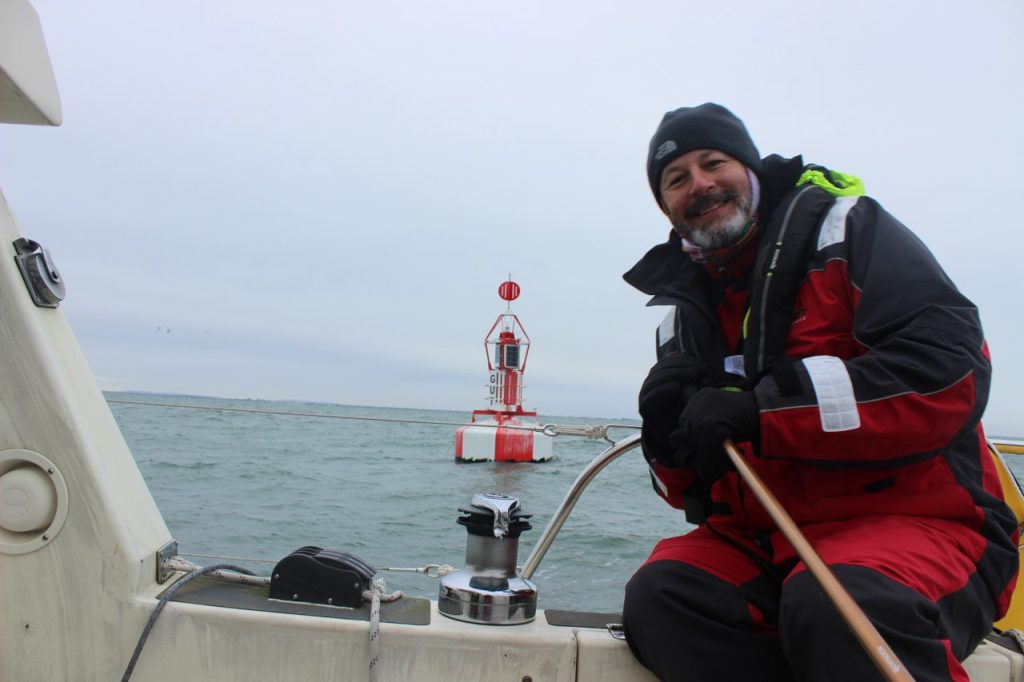
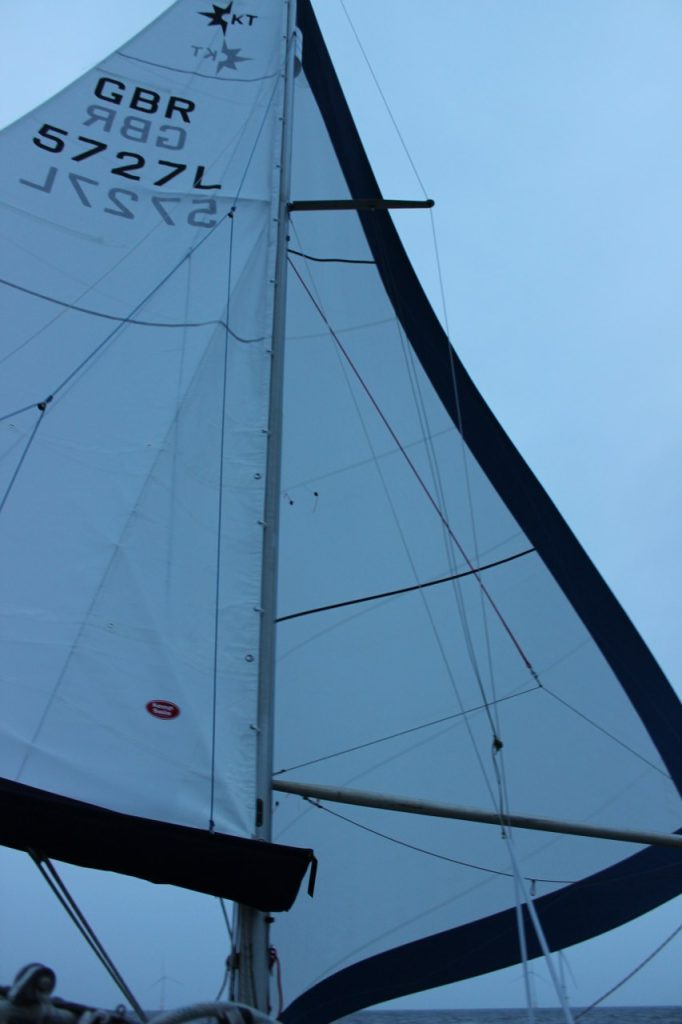
At the ‘Gut’ buoy we put a couple of reefs in the main before hardening up the sheets to go close hauled back to the Mersey. As we headed back the rain started, and the visibility was sometimes less than a mile.
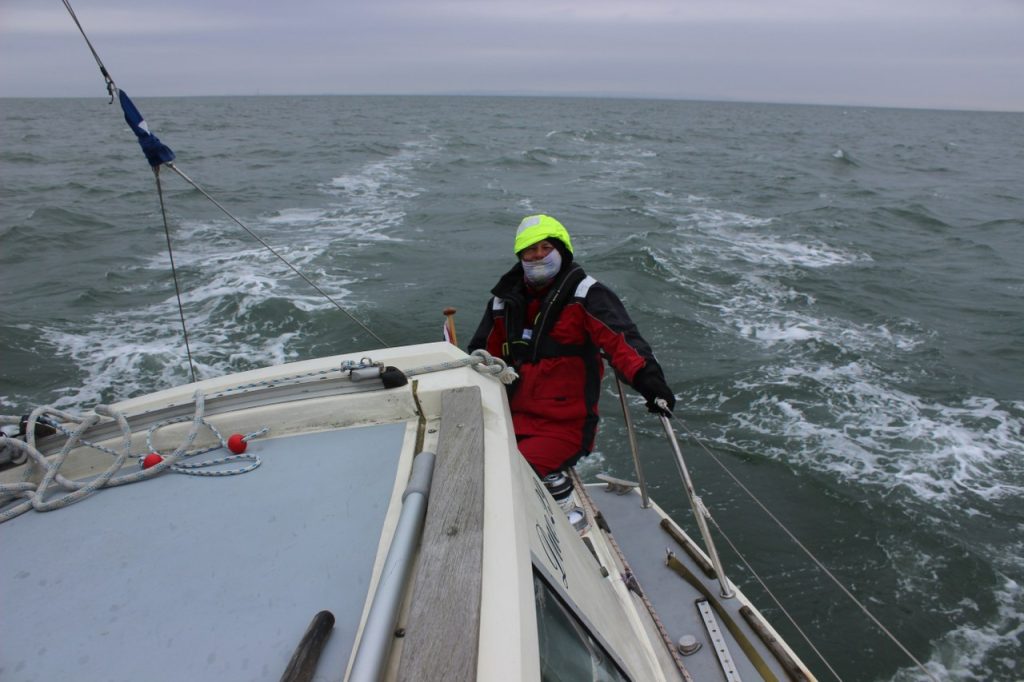
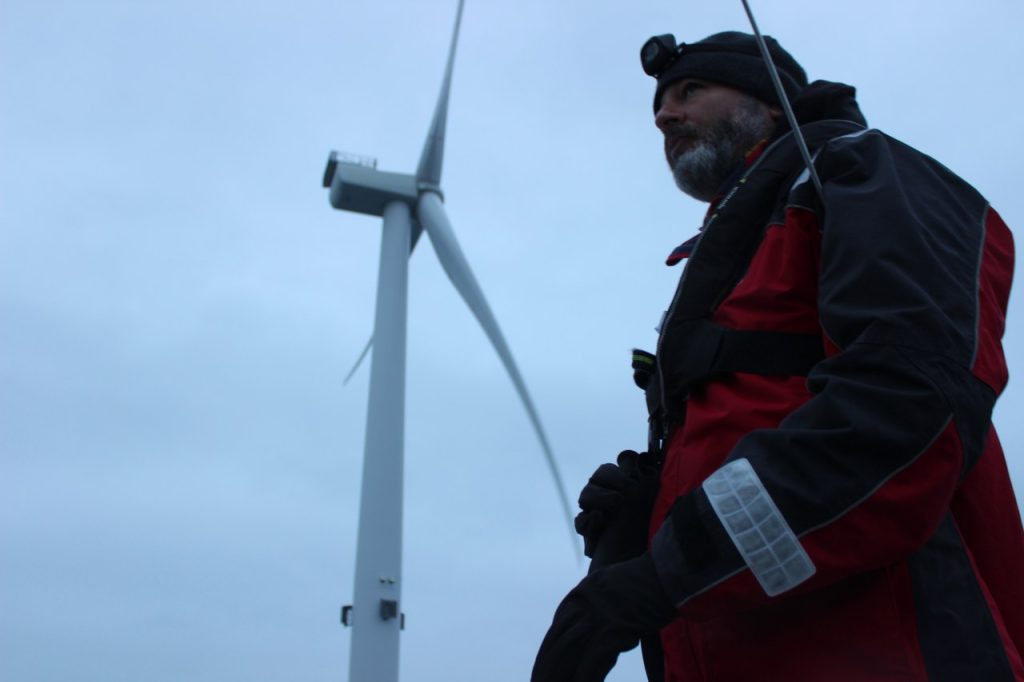
We reached the ‘Bar’ light vessel, again, at 11:22, and had to decide whether to tack up the main channel against an ebb tide, not something Lillebolero is good at, or carry on port tack back to the Dee estuary. As it was raining, we carried on and steered from inside.
By 15:00, we were off the Dee estuary heading east towards the Rock Channel. At 16:00, we arrived off the Rock Channel 15 minutes after low water. As it was neaps and Lillebolero only draws one metre, we decided not to wait for more tide. As we approached New Brighton, the sandbanks on either side of the channel got closer together. Fishermen were walking where we normally sail. We reduced sail and slowed the boat to crawl along Mockbeggar Wharf channel, in front of New Brighton. For a while, the echosounder showed there was only 10 centimetres below the keels. As we cleared ‘No. 11’ beacon and entered the main channel I resumed breathing. We passed ‘Brazil’ buoy at 16:34 and beat up the Mersey as the wind eased. We finally made ‘Pluckington’ buoy at 18:09:40, Sunday 16 April, which was 35 hours, 41 minutes, and 40 seconds after we started the challenge. During this period, we logged 90.6 and 98.3 miles through the water and over ground, respectively, and spent ten and a half hours at anchor. We were pleased and exhausted.
We then anchored off the lock and waited for the tide.
